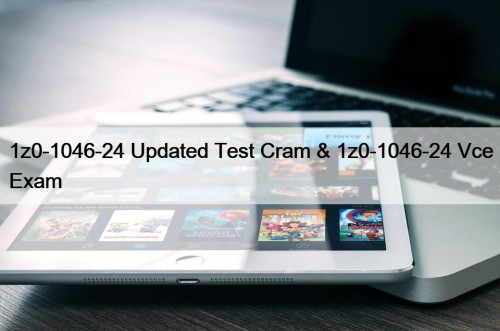Most Popular
 Reliable Salesforce Service-Cloud-Consultant Exam Prep - Service-Cloud-Consultant Relevant Answers
Reliable Salesforce Service-Cloud-Consultant Exam Prep - Service-Cloud-Consultant Relevant Answers
What's more, part of that VCETorrent Service-Cloud-Consultant dumps now are ...
 1z0-1046-24 Updated Test Cram & 1z0-1046-24 Vce Exam
1z0-1046-24 Updated Test Cram & 1z0-1046-24 Vce Exam
Our 1z0-1046-24 exam torrent has a high quality that you ...
 Reliable and Guarantee Refund of Oracle 1z0-1046-24 Practice Test According to Terms and Conditions
Reliable and Guarantee Refund of Oracle 1z0-1046-24 Practice Test According to Terms and Conditions
We indeed have the effective 1z0-1046-24 Exam Braindumps, and we ...



2025 Newest 100% Free CTAL-TM-001–100% Free Exam Topics | CTAL-TM-001 Valid Braindumps Files

Our product boosts many merits and high passing rate. Our products have 3 versions and we provide free update of the CTAL-TM-001 exam torrent to you. If you are the old client you can enjoy the discounts. Most important of all, as long as we have compiled a new version of the CTAL-TM-001 exam questions, we will send the latest version of our CTAL-TM-001 Exam Questions to our customers for free during the whole year after purchasing. Our product can improve your stocks of knowledge and your abilities in some area and help you gain the success in your career.
How to study the CTAL-TM Exam
There are two main types of resources for preparation of CTAL-TM certification exams first there are the study guides and books that are detailed and suitable for building knowledge from ground up then there are video tutorials and lectures that can somehow ease the pain of through study and are comparatively less boring for some candidates yet these demand time and concentration from the learner. Smart Candidates who want to build a solid foundation in all exam topics and related technologies usually combine video lectures with study guides to reap the benefits of both but there is one crucial preparation tool as often overlooked by most candidates the practice exams. Practice exams are built to make students comfortable with the real exam environment. Statistics have shown that most students fail not due to that preparation but due to exam anxiety the fear of the unknown. TrainingQuiz expert team recommends you to prepare some notes on these topics along with it don't forget to practice CTAL-TM exam dumps which had been written by our expert team, Both these will help you a lot to clear this exam with good marks.
Three Versions Of Updated ISTQB CTAL-TM-001 Exam Dumps
One of the main unique qualities of the TrainingQuiz ISTQB Exam Questions is its ease of use. Our practice exam simulators are user and beginner friendly. You can use ISTQB Certified Tester Advanced Level - Test Manager (CTAL-TM-001) PDF dumps and Web-based software without installation. ISTQB Certified Tester Advanced Level - Test Manager (CTAL-TM-001) PDF questions work on all the devices like smartphones, Macs, tablets, Windows, etc. We know that it is hard to stay and study for the ISTQB Certified Tester Advanced Level - Test Manager (CTAL-TM-001) exam dumps in one place for a long time.
CTAL-TM Certification Path
6 months of experience in Software development/software testing.Successful completion of the ISTQB Certified Tester Foundation level and a minimum of three years testing experience is recommended. The Intermediate Certificate may also be helpful but is not required.
How to book CTAL-TM Exams
In order to apply for the NET, You have to follow these steps
- Go to the CTAL-TM Official Site
- Read the instruction Carefully
- Follow the given steps
- Apply for the CTAL-TM
ISTQB Certified Tester Advanced Level - Test Manager Sample Questions (Q142-Q147):
NEW QUESTION # 142
Which of the following software characteristics are possibly revealed through the application of a open source static analysis tool? [1]
- A. Coding standard violations
- B. Concurrency thresholds
- C. Timing dependencies
- D. Memory leaks
Answer: A
Explanation:
A static analysis tool is a software tool that analyzes the source code of a program without executing it. It can detect various software characteristics, such as syntax errors, potential bugs, security vulnerabilities, code quality, and coding standard violations. Coding standard violations are deviations from the agreed or recommended rules and conventions for writing source code, such as naming, indentation, formatting, commenting, and complexity. A static analysis tool can check the source code against a predefined or customized coding standard and report any violations. Coding standard violations can affect the readability, maintainability, and portability of the code, and can also introduce defects or inconsistencies. List of tools for static code analysisTop 5 Open Source Source and Free Static Code Analysis Tools in 2020 References:
* List of tools for static code analysis - Wikipedia
* Top 5 Open Source Source and Free Static Code Analysis Tools in 2020 - GeeksforGeeks
NEW QUESTION # 143
A test log is one of the documents that need to be produced in this domain in order to provide evidence of testing. However, the level of detail of test logs can vary. Which of the following is NOT an influencing factor for the level of detail of the test logs being produced? 1 credit
- A. Level of test execution automation
- B. Regulatory requirements
- C. Experience level of testers
- D. Test level
Answer: C
NEW QUESTION # 144
Consider the following metrics:
a Percentage of all product risks identified during initial risk analysis b. Average time taken by developers to fix defects for each severity level c. Statement coverage achieved by the component test suite d. Breakdown of defects detected by test level How many of the five primary dimensions for test progress monitoring have been addressed by these metrics?
SELECT ONE OPTION
- A. 0
- B. 1
- C. 2
- D. 3
Answer: D
NEW QUESTION # 145
You are the Test Manager on a new project. The schedule is aggressive and will require the team to work at peak efficiency. The requirements are not well defined yet, but it is clear that the project will be using new technologies. To help the developers meet the development schedule, an offshore group will be added to the development team.
At this time there is not enough budget to add more testing resources. The project stakeholders are very concerned about the quality of delivered product and will be watching the project closely, particularly during the testing cycles. The exit criteria from the system test level require no open high priority/severity defects, 100% pass rate for all test cases covering risks that are classified as
"high" or "very high", 90% pass rate for all "medium" risks and 50% pass rate for all "low" and "very low" risks.
Given this information, which lifecycle model should you recommend? [3]
- A. V-model
- B. Spiral
- C. Waterfall
- D. Iterative/incremental
Answer: D
Explanation:
An iterative/incremental lifecycle model is a type of software development lifecycle that divides the project into smaller iterations or increments, each delivering a part of the functionality and undergoing its own planning, analysis, design, implementation, and testing phases1. This model is suitable for projects that have aggressive schedules, unclear requirements, new technologies, distributed teams, and high quality expectations, as it allows for early feedback, risk reduction, parallel development, frequent delivery, and continuous improvement2. Therefore, option B is the correct answer. Option A is incorrect because a spiral model is a type of iterative/incremental model that adds risk analysis and prototyping activities to each iteration3. While this model can also handle unclear requirements, new technologies, and high quality expectations, it may not be the best choice for projects that have aggressive schedules and distributed teams, as it requires more time and communication for risk assessment and prototyping4. Option C is incorrect because a V-model is a type of sequential model that maps each development phase to a corresponding testing phase in a V-shaped diagram5. This model is suitable for projects that have clear and stable requirements, well-known technologies, co-located teams, and moderate quality expectations, as it allows for early verification, traceability, and defect prevention. However, this model may not be the best choice for projects that have aggressive schedules, unclear requirements, new technologies, distributed teams, and high quality expectations, as it does not allow for early feedback, risk reduction, parallel development, frequent delivery, and continuous improvement. Option D is incorrect because a waterfall model is a type of sequential model that follows a linear sequence of phases from requirements to deployment. This model is suitable for projects that have simple and fixed requirements, well-known technologies, co-located teams, and low quality expectations, as it allows for easy planning, management, and documentation. However, this model may not be the best choice for projects that have aggressive schedules, unclear requirements, new technologies, distributed teams, and high quality expectations, as it does not allow for early feedback, risk reduction, parallel development, frequent delivery, and continuous improvement. Reference: 1: ISTQB Glossary, Iterative/incremental lifecycle model 2: ISTQB Advanced Level Test Manager Syllabus, Section 1.2.1 3: ISTQB Glossary, Spiral model 4: ISTQB Advanced Level Test Manager Syllabus, Section 1.2.1 5: ISTQB Glossary, V-model : ISTQB Advanced Level Test Manager Syllabus, Section 1.2.1 : ISTQB Advanced Level Test Manager Syllabus, Section 1.2.1 : ISTQB Glossary, Waterfall model : ISTQB Advanced Level Test Manager Syllabus, Section 1.2.1 : ISTQB Advanced Level Test Manager Syllabus, Section 1.2.1
NEW QUESTION # 146
You are a Test Manager on a new project. The software that is being created will be used to control the projectors in movie theaters. This is a time critical project because the software must be released before the Christmas holiday season which has the highest movie attendance of the year.
You have decided to implement a review process for the work products that are a part of this release to save both time and money. In order to expedite the training, you brought in a consultant to train the participants and moderators in proper review processes. Your team is enthusiastic about participating in the reviews.
The project is in the early planning stages. As the review leader, what is an appropriate activity for you to be doing at this point in the project? [3]
- A. Selecting the review items and the appropriate review type
- B. Gathering metrics to determine the success of the review process
- C. Setting a minimum number of defects to be identified in each review
- D. Calculating the ROI for the review process
Answer: A
NEW QUESTION # 147
......
CTAL-TM-001 Valid Braindumps Files: https://www.trainingquiz.com/CTAL-TM-001-practice-quiz.html
- 2025 Latest CTAL-TM-001 – 100% Free Exam Topics | CTAL-TM-001 Valid Braindumps Files 🕡 The page for free download of ➤ CTAL-TM-001 ⮘ on { www.prep4pass.com } will open immediately ☎CTAL-TM-001 Exam Exercise
- Pass Guaranteed Quiz 2025 Authoritative CTAL-TM-001: Exam ISTQB Certified Tester Advanced Level - Test Manager Topics 🐱 Search for ☀ CTAL-TM-001 ️☀️ and easily obtain a free download on ➥ www.pdfvce.com 🡄 📏Reliable CTAL-TM-001 Exam Blueprint
- CTAL-TM-001 Prep Guide - CTAL-TM-001 Guide Torrent -amp; CTAL-TM-001 Exam Torrent 💖 Search for ( CTAL-TM-001 ) and easily obtain a free download on ➤ www.prep4away.com ⮘ 🛢New CTAL-TM-001 Practice Materials
- Quiz High Hit-Rate ISTQB - CTAL-TM-001 - Exam ISTQB Certified Tester Advanced Level - Test Manager Topics 🗳 Go to website ➽ www.pdfvce.com 🢪 open and search for ➡ CTAL-TM-001 ️⬅️ to download for free 🐺CTAL-TM-001 Test Pass4sure
- 100% Pass Quiz CTAL-TM-001 - ISTQB Certified Tester Advanced Level - Test Manager Authoritative Exam Topics 🙍 Enter 「 www.vceengine.com 」 and search for ▛ CTAL-TM-001 ▟ to download for free 😝CTAL-TM-001 Valid Test Vce Free
- Quiz High Hit-Rate ISTQB - CTAL-TM-001 - Exam ISTQB Certified Tester Advanced Level - Test Manager Topics 🦚 Open { www.pdfvce.com } enter ⮆ CTAL-TM-001 ⮄ and obtain a free download 🛣CTAL-TM-001 Exam Exercise
- Exam CTAL-TM-001 Introduction 🤐 CTAL-TM-001 Test Dumps Pdf ⛽ Exam Dumps CTAL-TM-001 Free 🎊 Easily obtain free download of 【 CTAL-TM-001 】 by searching on ➠ www.vceengine.com 🠰 🖌CTAL-TM-001 Pass4sure Study Materials
- CTAL-TM-001 Prep Guide - CTAL-TM-001 Guide Torrent -amp; CTAL-TM-001 Exam Torrent 🧝 Download { CTAL-TM-001 } for free by simply entering ( www.pdfvce.com ) website 🏫CTAL-TM-001 Valid Test Vce Free
- CTAL-TM-001 Prep Guide - CTAL-TM-001 Guide Torrent -amp; CTAL-TM-001 Exam Torrent 👖 Open website ⏩ www.testsdumps.com ⏪ and search for ➠ CTAL-TM-001 🠰 for free download 😦CTAL-TM-001 Exam Exercise
- New CTAL-TM-001 Practice Materials 💗 Test CTAL-TM-001 Dumps Free 🎡 CTAL-TM-001 Exam Details 🌎 Enter ⏩ www.pdfvce.com ⏪ and search for ☀ CTAL-TM-001 ️☀️ to download for free 👩Instant CTAL-TM-001 Discount
- CTAL-TM-001 Pass4sure Study Materials 🔽 Valid CTAL-TM-001 Exam Notes 🐾 Valid CTAL-TM-001 Exam Duration ⚠ Search for “ CTAL-TM-001 ” on ➡ www.pdfdumps.com ️⬅️ immediately to obtain a free download 🤦Latest CTAL-TM-001 Exam Topics
- CTAL-TM-001 Exam Questions
- z-edike.com educertstechnologies.com graphiskill.com academy.saleshack.io hocnhanh.online skillrising.in lokeshyogi.com bracesprocoach.com elajx.com online.guardiansacademy.pk
Tags: Exam CTAL-TM-001 Topics, CTAL-TM-001 Valid Braindumps Files, CTAL-TM-001 New Exam Bootcamp, High CTAL-TM-001 Quality, Exam CTAL-TM-001 Sample